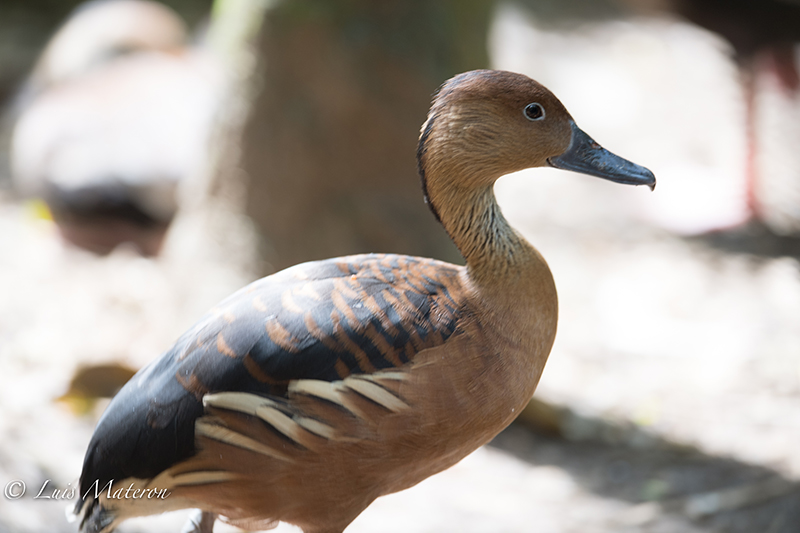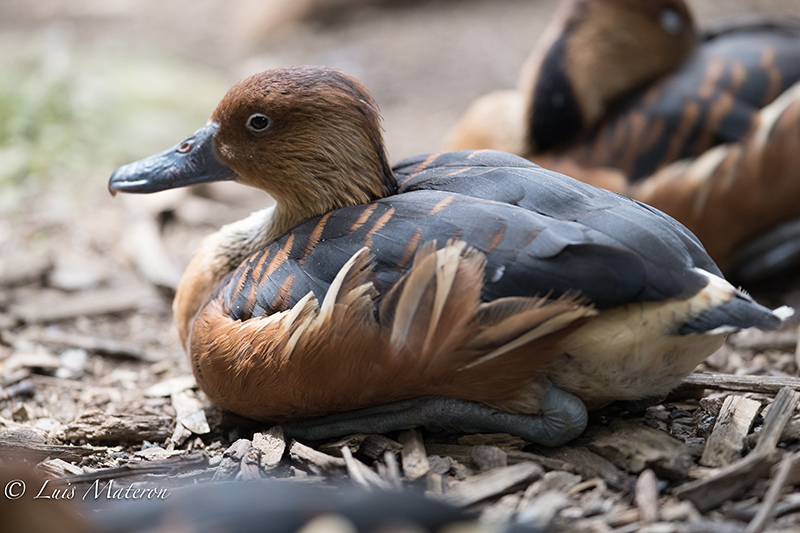
FULVOUS whistling-duck
Iguaza MARÍA
Dendrocygna bicolor
The fulvous whistling duck breeds across the world's tropical regions in much of this continent. It is a long-legged duck, mainly golden-brown with a darker back and an obvious blackish line down the back of its neck. It has whitish stripes on its flanks, a long grey bill and grey legs. In flight, the wings are brown above and black below, with no white markings, and a white crescent on the rump contrasts with the black tail. All plumages are fairly similar, but the female is slightly smaller and duller-plumaged than the male. It weighs 621 a 755 g. The juvenile has paler underparts, and appears generally duller, especially on the flanks. It has plumage that is mainly reddish brown, long legs and a long grey bill, and shows a distinctive white band across its black tail in flight. It is noisy and found in lowland marshes and swamps in open, flat country, and it avoids wooded areas and does not perch on trees. It walks well, without waddling, and normally feeds by upending, though it can dive if necessary. The clutch is around 6-16 whitish eggs but other females may lay into the nest, so 20 or more may be found. Eggs of other species may be added to the nest. The breeding adults, which pair for life, take turns to incubate, and the eggs hatch in 24–28 days. The ducklings leave the nest within a day or so of hatching, but the parents continue to protect them until they fledge around 9 weeks later.
Se encuentra en todo el continente. Esta iguaza es de color café canela. Posee una línea a lo largo de la nuca de color café oscuro. Sus alas y espalda son negras con un vistoso escamado marrón claro. Presenta un parche de estrías blancas en el cuello y en los lados y coberteras supracaudales. Se distingue al vuelo por una banda blanca en base de la cola. Tiene pico y patas largas grises. La hembra es más pálida y más pequeña que el macho. Los jóvenes son más pálidos con las coberteras supracaudales punteadas de café. Pesa 621 a 755 g. Se le observa en grupos de tamaño variable con otras especies. Habita en zonas pantanosas, lagunas, planicies inundables y en ocasiones en aguas salobres. Consume pastos y semilla y frutos y muy poco alimento de origen animal. A veces se sumerge en el agua en búsqueda de alimento. Anida en montículos entre la vegetación y rara vez en cavidades de arboles. Pone entre 6 y 16 huevos los cuales la pareja incuba durante 24 a 28 días. Las crías adquieren todo su plumaje a los dos meses después de la eclosión y alcanzan madurez sexual al año. Las parejas perduran toda su vida en monogamia. Es de hábitos nocturnos.

LAM_3613

LAM_3765

LAM_3766
